Fashion
How Asian Inspired Fashion Became a Global Style Trend
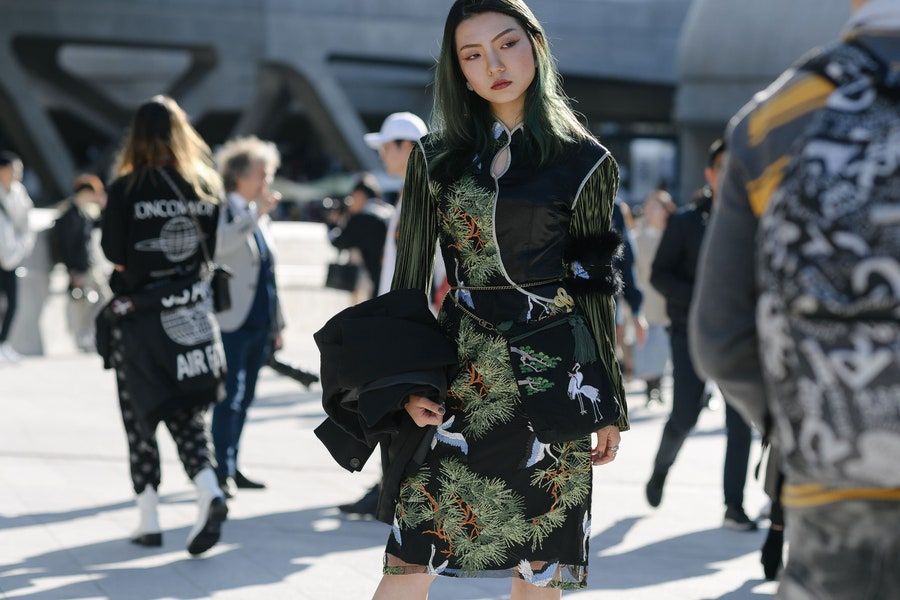
Fashion is more than only style; it mirrors identity, history, and culture. Inspired by Asia, fashion has developed into a worldwide craze adored for its bold colours, complex details, and classic forms. Asian style influences world wardrobes from classic clothing such as saris and kimonos to contemporary variations seen on runways. The increasing popularity of Asian clothes UK in countries like the UK shows how well these trends appeal to many people. People today view them as daily wear as well as for cultural events. This rising demand points to the fact that Asian-inspired apparel has developed into a global language unbound by location.
Roots of Asian Fashion
Asian style has strong cultural roots. Every location has distinctive customs. Stories are told by India’s saris, Japan’s kimonos, and China’s qipaos. These clothes symbolise history, creativity, and meaning. They are more than just clothes. They stand for identity, social level, and communal values. As people appreciated their significance and detail, worldwide interest in these trends increased. Today’s traditional Asian style has spread beyond small villages. Today, designers find inspiration from centuries-old patterns, textiles, and embroidery. This merging of contemporary clothing and legacy draws international attention. Asian looks show how tradition and modernism can coexist.
Rise of Pop Culture Influence
Popular culture elevated Asian clothing to worldwide recognition. Anime characters, Bollywood movies, and K-pop groups demonstrate various looks. Every costume is seen by their fans. Celebrities’ attire quickly turns into a trend. Through these influences, vibrant colours, huge jackets, and school-inspired clothing became mainstream fashion. Korean dramas also increased curiosity. Audiences respect the casual elegance of personalities. Bollywood films draw worldwide interest with their bright clothing. Traditional designs even abound in animated programs, combining ancient with contemporary. Pop culture forms a bridge. It links Asian creativity with the world youth.
Power of Global Fashion Weeks
Asian designers found possibilities through fashion weeks. Currently, international events are held in Tokyo, Seoul, and Shanghai. Their runways show audacious patterns and innovative cuts. Designers combine modern shapes with historical textiles. Media, customers, and influencers are all drawn to these events. Asian designers also secured places at Western fashion events. Names from India, China, and Japan are now seen on stages alongside New York and Parisian brands. Their collections offer new angles. They question the notion that Western fads restrict fashion. Global visibility lets Asian inventiveness sparkle everywhere.
Fusion of Tradition and Modernity
Asian-inspired style attracts attention partially because of its equilibrium. Designers combine modern components with tradition. A sari turns, for instance, into a western-tailored gown. For casual wear, a kimono becomes a jacket. Streetwear hoodies show embroidery from Pakistan or India. This combination helps to make designs flexible. People can wear them daily or on momentous occasions. Modern cuts make classic materials more approachable. Young customers appreciate the blending of tradition and comfort. While remaining current, the fusion approach honours roots. This method makes Asian fashion timeless.
Influence of Social Media
Social media amplified Asian fashion. Instagram, TikTok, and Pinterest daily feature fresh fads. Influencers wear hanboks, kurtas, or qipaos in inventive ways. Their devotees mirror the styles. Online stores make these outfits accessible globally. Millions of views are drawn by hashtags like AsianFashion or KStyle. Through their screens, people come to know fresh designers and traditions. Moreover, it generates debate about heritage on social media. Young Asians staying abroad boldly flaunt their conventional clothes online.
Role of Sustainability
The growth of Asian-inspired fashion depends in part on sustainability. Many Asian clothes highlight natural materials like silk, cotton, or linen. Eco-aware consumers love organic dyes and handwoven fabrics. Slow fashion techniques emphasise craftsmanship, therefore, hand embroidery. Western consumers want clothes that last. Asian designs exhibit creativity as well as quality. The tales behind every piece of apparel connect buyers to it. Companies emphasise ethical production techniques and artistic ability.
Acceptance in Everyday Wear
Asian fashion is now not just reserved for cultural events or holidays. It now seems like casual clothes. High street stores include Cheongsam-inspired dresses, kimonos, and mandarin collars. Even simple T-shirts incorporate patterns from Indian block printing or Japanese art.
One other factor is comfort. From Asian clothing, loose silhouettes suit contemporary lifestyles. Wide trousers, wrap dresses, and billowing materials are all simple to wear.
Future of Asian Inspired Fashion
Asian-inspired fashion has a bright future. Global brands are now working with Asian designers. Luxury homes include Asian prints in their collections. Young designers provide innovative ideas while honouring traditions. The trend is not slowing.
Technology will also be of aid. Asian styles spread more quickly through virtual fashion shows, internet shops, and digital designs. Cultural pride, meanwhile, keeps rising. Younger generations proudly pass on heritage.
Conclusion
More than just a fad, Asian-inspired fashion. It links contemporary living with history. From cultural clothes to social media frenzy, every element has influenced its worldwide appeal. People love the meaning, comfort, and details these creations include. Asian impact will stay strong as fashion continues to change. Style has already proven not to be confined to one area. Rather, it blossoms when civilisations cross and encourage one another.
Visit woolrec for more informative blogs.
Fashion
Custom Jersey Printing: Designing Your Team’s Identity with SeamJersey
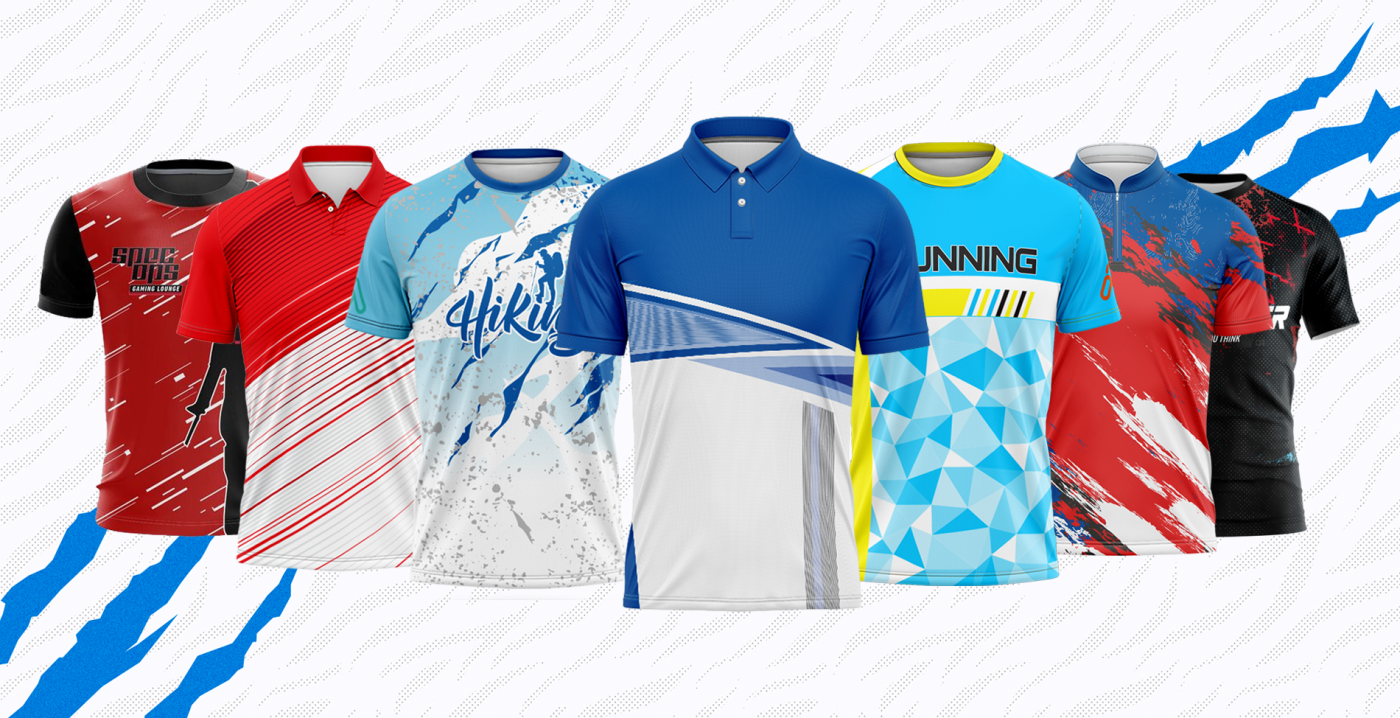
In the world of sports, every team is defined not only by skill and strategy but also by identity. From football to basketball, baseball to esports, the custom jersey is far more than a uniform — it’s the visual heartbeat of a team. The colors, design, and name stitched across a jersey represent unity, pride, and passion.
With Custom jersey printing, teams have endless possibilities to create apparel that reflects who they are and what they stand for. And no brand captures that spirit better than SeamJersey, a global leader in personalized sportswear design and production.
Whether you’re part of a school team, a professional club, or a recreational league, seamjersey.com makes it simple to create high-quality, stylish, and performance-driven jerseys that bring your team’s story to life.
This in-depth guide explores everything you need to know about custom jersey printing — from design concepts and printing techniques to fabric choices, color psychology, and the SeamJersey advantage.
- Why Custom Jersey Printing Matters
Sports uniforms have evolved from simple identification garments into symbols of pride and expression. A custom-printed jersey goes beyond practicality — it becomes a source of motivation and unity for the players and the fans alike.
1.1. Team Identity and Pride
When players wear custom-designed jerseys featuring their team’s logo, name, and colors, they feel an instant sense of belonging. The uniform embodies the team’s culture, values, and legacy — turning individual players into a united force.
A well-designed jersey also strengthens morale and enhances professional appearance. Teams that look confident and coordinated often play that way too.
1.2. Recognition and Branding
In competitive sports, visibility matters. Custom jersey printing ensures that your team stands out from the crowd — whether on the field, court, or stage. A distinct design helps audiences identify your players instantly and builds recognition for your club, school, or brand.
For sponsors, printed jerseys serve as powerful marketing tools. A sponsor logo on a professional-quality jersey from SeamJersey can reach thousands of viewers — combining athletic performance with smart branding.
1.3. Emotional Connection
Athletes and fans form emotional attachments to their jerseys. Every printed name, number, and stripe carries memories of triumphs, teamwork, and challenges overcome. Custom jersey printing allows you to create something personal and meaningful — a wearable legacy.
- The Evolution of Custom Jersey Printing
Jersey printing has come a long way from basic embroidery or vinyl lettering. Today, advanced printing technologies have revolutionized the way sports apparel is designed and produced.
2.1. Early Days
In the early decades of team sports, jerseys were simple wool or cotton shirts with minimal decoration. Numbers and names were often sewn manually, making uniform production slow and inconsistent.
2.2. Rise of Screen Printing
By the mid-20th century, screen printing transformed the game. It allowed for consistent and colorful designs at scale. However, it was limited in detail and often prone to fading with frequent washing.
2.3. The Digital Printing Revolution
Modern custom jersey printing is defined by digital dye-sublimation — a process that embeds ink directly into the fibers of the fabric. This results in vivid, long-lasting designs that never peel or crack. SeamJersey uses the latest sublimation technology to produce flawless prints with intricate details and vibrant colors.
2.4. The Era of Customization
Today’s athletes and teams demand personalization — and SeamJersey delivers it. From individual player names to unique patterns and color gradients, custom jersey printing has become an art form that combines performance with creativity.
- How Custom Jersey Printing Works
Understanding the printing process helps teams make informed choices about design, durability, and performance. Let’s explore the methods that make custom jerseys come to life.
3.1. Dye-Sublimation Printing
This is the gold standard for professional sportswear. The process involves transferring dye onto polyester fabric using heat and pressure. The ink turns into gas and permanently fuses with the fibers, creating a smooth, breathable, and vibrant finish.
Advantages:
- Fade-resistant and durable
- Lightweight and flexible
- Allows complex, full-color designs
- Perfect for performance fabrics
SeamJersey specializes in sublimation printing for all team sports, ensuring every jersey maintains its sharpness even after intense matches.
3.2. Screen Printing
Screen printing uses mesh stencils to apply layers of ink onto fabric. It’s cost-effective for simple designs with limited colors, making it ideal for training shirts or fan apparel.
Advantages:
- Great for bulk orders
- Strong, opaque colors
- Works well on cotton-based materials
However, screen printing lacks the flexibility of sublimation for detailed patterns or gradients.
3.3. Heat Transfer Printing
This method uses a heat press to transfer pre-printed designs or vinyl graphics onto fabric. It’s excellent for small orders or adding last-minute player names and numbers.
Advantages:
- Quick and versatile
- Works on multiple fabric types
- Cost-effective for customization
3.4. Embroidery
Though not a “printing” method, embroidery adds a premium touch to custom jerseys, especially for logos or crests. It gives a textured, professional look but may not be ideal for lightweight sports fabrics.
- Design Elements That Define Great Jerseys
Creating a memorable jersey involves more than just printing logos. It’s about balancing aesthetics, functionality, and comfort. Here’s what goes into designing standout custom jerseys.
4.1. Color Psychology
Colors evoke emotion. The shades you choose can influence both players and opponents.
- Red: Power, passion, aggression
- Blue: Confidence, calmness, focus
- Black: Strength, authority
- Green: Energy, balance
- Yellow: Optimism, speed
SeamJersey’s design experts help teams select colors that not only look great but resonate with their values.
4.2. Logos and Team Identity
The logo is the heart of your brand. It should be visible, scalable, and printed in high resolution. SeamJersey ensures every logo is optimized for printing clarity, whether large on the chest or small on a sleeve.
4.3. Typography and Numbers
Readable yet stylish fonts are crucial for names and numbers. SeamJersey offers custom typography templates to ensure every jersey remains both unique and legible on the field.
4.4. Fabric Choice
Different sports require different fabrics. Volleyball jerseys need light, stretchable material, while soccer kits require moisture-wicking properties. SeamJersey provides a range of athletic fabrics including polyester mesh, spandex blends, and breathable knits — all compatible with advanced printing methods.
4.5. Fit and Function
Comfort is performance. A well-fitted jersey enhances movement and reduces distractions. SeamJersey offers men’s, women’s, and youth cuts to ensure the right fit for every player.
- Benefits of SeamJersey’s Custom Jersey Printing
At seamjersey.com, customization meets craftsmanship. Every detail — from the stitching to the sublimation — is designed with precision and passion.
5.1. Professional Quality
SeamJersey uses industrial-grade printing and sewing equipment to produce jerseys that rival professional sportswear brands. The materials are sweat-resistant, fade-proof, and built for high-impact performance.
5.2. 100% Customizable
No templates, no limits. SeamJersey allows you to create your own design or collaborate with their in-house artists. You can adjust colors, add gradients, and incorporate sponsor logos without restrictions.
5.3. Fast Global Shipping
Whether you’re in the U.S., Europe, or Asia, seamjersey.com ensures timely delivery without compromising quality. The company’s streamlined production system guarantees rapid turnaround times for bulk and custom orders.
5.4. Affordable for All Teams
From school sports to corporate leagues, SeamJersey provides competitive pricing and bulk discounts — making professional-quality jerseys accessible to everyone.
5.5. Sustainable Practices
In an era where sustainability matters, SeamJersey leads by example. The brand minimizes waste through digital printing and offers eco-friendly fabric options for environmentally conscious teams.
- Step-by-Step Guide to Ordering Custom Jerseys
Creating your dream jersey with SeamJersey is easy and exciting. Here’s how to get started:
Step 1: Visit seamjersey.com
Go to the official SeamJersey website and browse the wide range of jersey styles for various sports.
Step 2: Choose Your Sport and Template
Select the sport (basketball, soccer, baseball, volleyball, etc.) and pick a template closest to your vision.
Step 3: Customize the Design
Use SeamJersey’s online design tool to add your logo, colors, player names, and numbers. You can even upload your own graphics or collaborate with their design team.
Step 4: Select Sizes and Quantities
SeamJersey offers inclusive size options for men, women, and youth. Bulk and single orders are both supported.
Step 5: Review and Order
Preview your final design, confirm details, and place your order. SeamJersey’s team will guide you through production and shipping updates.
- Different Types of Custom Jerseys
SeamJersey serves a diverse community of athletes and organizations. Here’s a breakdown of the most popular categories for custom jersey printing:
- Basketball Jerseys: Lightweight, sleeveless, and moisture-wicking for quick movement.
- Football Jerseys: Durable and breathable, designed for high-intensity contact.
- Baseball Jerseys: Classic button-up styles with custom logos and stripes.
- Soccer Jerseys: Stretchable and aerodynamic with full sublimation printing.
- Volleyball Jerseys: Form-fitting designs that allow unrestricted motion.
- Esports Jerseys: Stylish, tech-inspired prints for online and live gaming events.
Every category is customizable down to the smallest detail at seamjersey.com.
- Trends in Custom Jersey Printing
Sports fashion is constantly evolving. Here are some modern trends shaping the world of custom jersey printing:
8.1. Minimalist Design
Simple, clean lines with subtle accents are becoming increasingly popular. They give a modern, professional feel.
8.2. Gradient and Fade Effects
Smooth color transitions add depth and creativity to team designs.
8.3. Metallic and Neon Finishes
Reflective inks and neon highlights bring jerseys to life under stadium lights.
8.4. Sustainable Fabric Use
Recycled polyester and eco-friendly inks are now standard in SeamJersey’s production process.
8.5. Personalized Details
Teams are adding motivational quotes, flags, or initials to make each jersey uniquely meaningful.
- Maintenance Tips for Custom Jerseys
To keep your custom-printed jerseys looking new:
- Wash in cold water to preserve color.
- Avoid bleach and harsh detergents.
- Air-dry or tumble dry low.
- Turn inside out before washing to protect prints.
- Store in a cool, dry space to prevent fabric damage.
SeamJersey’s printing technology ensures long-lasting quality even after dozens of games and washes.
- Why SeamJersey Leads the Industry
There are countless jersey printers out there, but SeamJersey stands out for combining cutting-edge technology with personal service. Here’s what makes them the preferred choice:
- Over a decade of experience in custom jersey printing.
- In-house designers dedicated to client satisfaction.
- Advanced sublimation facilities for flawless color precision.
- Transparent pricing and no hidden costs.
- A strong reputation for reliability and global delivery.
From local teams to international clubs, SeamJersey’s commitment to craftsmanship and creativity has made it a trusted name in the industry.
- Customer Testimonials
“We ordered custom soccer jerseys from seamjersey.com, and the results were incredible. The colors were vibrant, the fabric was light, and everyone loved the fit!”
— Lucas, Soccer Coach
“Our esports team wanted something futuristic. SeamJersey’s designers brought our idea to life perfectly. The printing quality was world-class.”
— Riley, Team Manager
“As a school sports coordinator, I’ve worked with several suppliers, but SeamJersey’s service, speed, and quality are unmatched.”
— Angela, Athletics Director
- The Future of Custom Jersey Printing
With advancements in 3D design software, AI-driven personalization, and sustainable textiles, the future of custom jersey printing looks brighter than ever. SeamJersey is at the forefront of this innovation — exploring smart fabrics, augmented reality previews, and eco-conscious production to shape the next generation of teamwear.
Soon, teams will not only wear their identity — they’ll experience it in dynamic, interactive ways.
- Conclusion: Wear Your Passion with SeamJersey
Your jersey is more than fabric — it’s your team’s story, ambition, and pride stitched into every thread. Through Custom jersey printing, you have the power to turn ideas into reality and transform unity into style.
With SeamJersey, you don’t just get high-quality sportswear; you get craftsmanship, creativity, and commitment rolled into one seamless experience. From design to delivery, seamjersey.com ensures your team looks as powerful as it performs.
No matter your sport, no matter your dream — your journey begins with the right jersey.
Fashion
Comme des Garcons: The Iconic Avant-Garde Fashion Brand
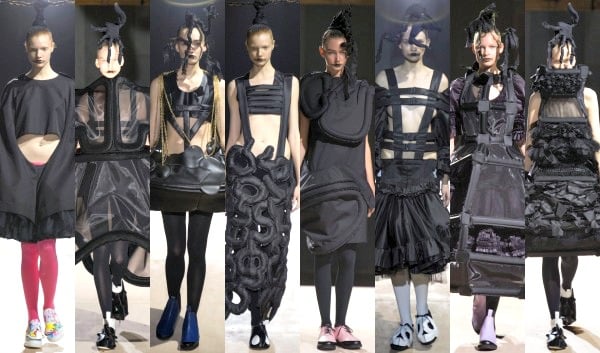
Comme des Garçons (CDG) stands as one of the most influential and innovative fashion brands in the world. Renowned for its avant-garde designs, unconventional aesthetics, and boundary-pushing collections, Comme des Garcons has captivated fashion enthusiasts and industry insiders alike since its founding. This article explores the brand’s history, signature style, key product lines, global impact, and what makes it a timeless staple in contemporary streetwear and high fashion.
Origins and Vision of Comme des Garçons
Comme des Garçons was established in 1969 in Tokyo by Rei Kawakubo, a visionary Japanese designer whose radical approach to fashion challenged traditional Western norms. The brand name, French for “like boys,” reflects a deliberate play on gender norms and fashion expectations.
From the outset, Kawakubo sought to disrupt and redefine beauty standards through her designs. Early collections rejected traditional feminine silhouettes by emphasizing asymmetry, deconstruction, and monochromatic palettes. This approach was initially met with resistance from the conservative Japanese market but found fervent acclaim in Europe, especially after the brand debuted in Paris in 1981.
Signature Style and Design Philosophy
Comme des Garçons is synonymous with avant-garde fashion. Kawakubo’s design philosophy embodies experimentation, artistic freedom, and the rejection of conventional fashion rules. Key features that define CDG’s style include:
- Deconstruction and Reconstruction: Garments often feature exposed seams, unfinished edges, and deliberately distorted proportions.
- Black as a Signature Color: Though CDG experiments with colors, black remains dominant—symbolizing mystery, rebellion, and elegance.
- Gender Fluidity: Many collections blur the lines between traditional menswear and womenswear, embracing androgyny.
- Unconventional Materials and Textures: CDG frequently uses unusual fabrics and unconventional textiles to create tactile, visually striking pieces.
- Oversized Silhouettes: Voluminous, oversized jackets, layered shirts, and exaggerated shapes are staples.
These elements combine to create collections that feel like modern art pieces rather than just clothing, challenging wearers to rethink fashion as a form of self-expression.
Key Product Categories and Popular Collections
Comme des Garçons offers a wide range of product lines catering to different tastes within the avant-garde and streetwear spectrum.
- Comme des Garçons Play: Launched in the early 2000s, this sub-label is known for its casual, playful designs. It features the iconic heart logo with eyes, designed by Filip Pagowski. Play’s graphic tees, hoodies, sneakers, and accessories are wildly popular among younger audiences, blending high fashion with street style.
- Main Comme des Garçons Collection: This is the core of Kawakubo’s creative output, showcasing runway shows that emphasize artistic creativity and thematic storytelling, often pushing the boundaries of traditional fashion shows.
- COMME des GARÇONS Homme: A menswear-focused line offering elegant, innovative takes on classic suits, shirts, and casual wear, maintaining CDG’s experimental aesthetics.
- COMME des GARÇONS Shirt: Known for reinventing classic CDG Shirt with unique twists like asymmetric cuts, unconventional patterns, or unexpected fabric mixes.
- Collaborations: CDG frequently collaborates with other brands and designers such as Nike, Converse, Supreme, and Gucci, creating highly sought-after limited-edition pieces that merge avant-garde design with mainstream appeal.
CDG’s Influence on Global Fashion and Culture
Comme des Garçons has left a profound impact on fashion worldwide, shaping trends across both luxury and streetwear sectors. The brand is credited with:
- Pioneering Avant-Garde Design: CDG revolutionized runway presentations and inspired a generation of designers to prioritize creativity over commercialism.
- Championing Androgyny: The brand helped mainstream gender-neutral fashion decades before it became a widespread cultural movement.
- Cross-Cultural Influence: By merging Japanese minimalism with Western fashion sensibilities, CDG created a truly global aesthetic that resonates across cultures.
- Streetwear Integration: Through Play and collaborations with streetwear giants, CDG blurred the lines between high fashion and everyday wear, influencing many contemporary streetwear brands.
How to Style Comme des Garçons for a Modern Wardrobe
Incorporating Comme des Garçons pieces into your wardrobe offers a unique way to express individuality and sophistication.
- Pair a COMME des GARÇONS Play graphic tee with relaxed jeans and sneakers for an effortless streetwear vibe.
- Use an oversized CDG jacket or asymmetrical coat as a statement piece in a monochromatic outfit.
- Mix and match CDG Shirt pieces for a high-fashion twist on classic tailoring.
- Layer CDG menswear designs with casual staples to balance avant-garde and comfort.
- Use accessories like CDG hats or bags from their collaborations to add subtle but recognizable designer flair.
Shopping Comme des Garçons in Pakistan and Worldwide
Comme des Garçons products are available globally through high-end department stores, boutiques, and online platforms. Pakistan’s growing fashion consumers can find CDG pieces via select luxury retailers or international e-commerce sites offering shipping to Pakistan.
Prices tend to reflect the brand’s luxury status, with basic Play tees starting from moderate luxury pricing, while runway pieces and limited collaborations can reach premium price points.
FAQs About Comme des Garçons
Q: Who founded Comme des Garçons?
A: Rei Kawakubo founded Comme des Garçons in 1969.
Q: What is the meaning behind the name Comme des Garçons?
A: It means “like boys” in French, reflecting the brand’s gender-neutral and rebellious style.
Q: What makes CDG’s design style unique?
A: Avant-garde aesthetics, asymmetry, deconstruction, oversized silhouettes, and predominance of black color define the brand.
Q: What is the Comme des Garçons Play line?
A: Play is a popular sub-label featuring casual graphic tees and streetwear with the iconic heart logo.
Q: Is CDG accessible in the UK?
A: CDG products are available through select luxury retailers and international online stores that ship to the UK.
Q: How do CDG collaborations affect the brand?
A: Collaborations create buzz and allow limited-edition releases that fuse streetwear and high fashion.
Fashion
Babydollkaila: Fashion, Lifestyle, and Influence

Introduction: Who is Babydollkaila?
The digital world is full of unique personalities, but Babydollkaila has managed to stand out for a reason. Known for a captivating presence on social media and digital platforms, Babydollkaila combines creativity, authenticity, and interactive content to engage a growing audience.
From fashion inspiration to lifestyle tips, Babydollkaila has created a niche that resonates with fans worldwide. In this article, we’ll explore who Babydollkaila is, why they are gaining popularity, and how you can engage with this exciting digital persona.
The Origin Story of Babydollkaila
Understanding Babydollkaila begins with tracing the origins of this digital persona. While many online personalities emerge from social media trends, Babydollkaila’s journey is marked by consistent creativity and engagement. Initially recognized for distinct visual aesthetics and relatable content, Babydollkaila quickly attracted attention and grew into a recognizable name online.
The appeal lies in authenticity Babydollkaila doesn’t rely solely on high-production content but focuses on connecting with audiences in meaningful ways. This approach has helped establish a strong online community around the brand.
Key Characteristics That Make Babydollkaila Unique
So, what sets Babydollkaila apart from others in the online sphere? Several key factors contribute to the rising popularity:
-
Authenticity: Babydollkaila’s content feels genuine, making fans feel personally connected.
-
Creativity: From visual aesthetics to original content ideas, Babydollkaila continuously innovates.
-
Engagement: Direct interaction with followers via comments, live streams, and polls builds a loyal community.
-
Relatability: Many followers identify with the personality, lifestyle, and perspectives shared by Babydollkaila.
This combination of traits creates a compelling persona that resonates with audiences beyond superficial online engagement.
Social Media Presence of Babydollkaila
Social media platforms are at the core of Babydollkaila’s influence. Instagram, TikTok, and YouTube serve as primary channels for content sharing and interaction.
Babydollkaila uses these platforms to:
-
Showcase daily life and lifestyle tips
-
Share creative projects and fashion inspiration
-
Host interactive sessions and challenges
-
Foster a sense of community among followers
The success on social media is not just about content quantity but also about quality engagement. Fans feel involved in the narrative, making Babydollkaila more than just a digital personality they become part of a growing community.
Popular Themes in Babydollkaila’s Content
The content produced by Babydollkaila is diverse and carefully curated. Here are some recurring themes:
-
Fashion and Aesthetics: Outfit inspiration, trend discussions, and styling tips.
-
Lifestyle and Wellness: Healthy routines, self-care tips, and advice for mindful living.
-
Creative Projects: DIY crafts, art, and digital content creation tips.
-
Interactive Activities: Social media challenges, polls, and Q&A sessions for fans.
These themes help Babydollkaila remain versatile while maintaining a strong personal brand identity.
Engaging with Babydollkaila
For fans wanting to engage with It, interaction is simple but meaningful. Here are some ways:
-
Follow Official Accounts: Stay updated on new content across Instagram, TikTok, and YouTube.
-
Participate in Interactive Content: Engage in polls, live streams, and challenges.
-
Share Inspired Creations: Contribute fan art or creative projects inspired by Babydollkaila.
-
Respect the Community: Positive engagement ensures a welcoming environment for all fans.
Active participation enhances the experience, making followers feel part of Babydollkaila’s journey.
Influence and Cultural Impact
The influence of It goes beyond online platforms. Fans often cite inspiration from It in their personal style, creative projects, and even career aspirations. The emphasis on authenticity encourages individuals to express themselves freely.
Brands and marketers have also noticed the engagement rates and loyal following, leading to collaborations that further enhance Babydollkaila’s visibility. This cultural impact highlights the significance of personal branding and genuine content in the digital age.
Tips for Maximizing Your Babydollkaila Experience
If you want to make the most of being a fan of Babydollkaila, here are some practical tips:
-
Be Consistent: Follow Babydollkaila on multiple platforms to never miss updates.
-
Engage Respectfully: Comment, share, and interact positively with content.
-
Create Your Own Content: Fans who contribute inspired creations strengthen the community.
-
Stay Updated: New trends and projects are often shared first on social media.
Following these tips ensures a rich, immersive experience while staying connected with the evolving It brand.
The Future of Babydollkaila
Looking ahead, It shows strong potential for continued growth. With a foundation built on authenticity, creativity, and community engagement, Babydollkaila is poised to explore new platforms, collaborations, and innovative content formats.
The growing influence may also inspire other emerging digital personalities to prioritize genuine engagement over superficial popularity. As online communities continue to evolve, It stands out as a model of sustainable digital influence.
Conclusion
In conclusion, It represents a unique blend of authenticity, creativity, and community connection. From fashion inspiration to lifestyle advice and creative projects, It has carved out a distinctive space in the digital world. Fans and followers are not just observers but active participants in an ongoing journey of creativity and self-expression.
By understanding and engaging with Babydollkaila, audiences can gain inspiration, entertainment, and a sense of belonging in an increasingly digital world. For anyone exploring trending online personalities, It is a must-follow for a genuine, inspiring experience.
Fashion
Bottega Desires and Bottega Desires Shirt: A Fusion of Luxury and Streetwear
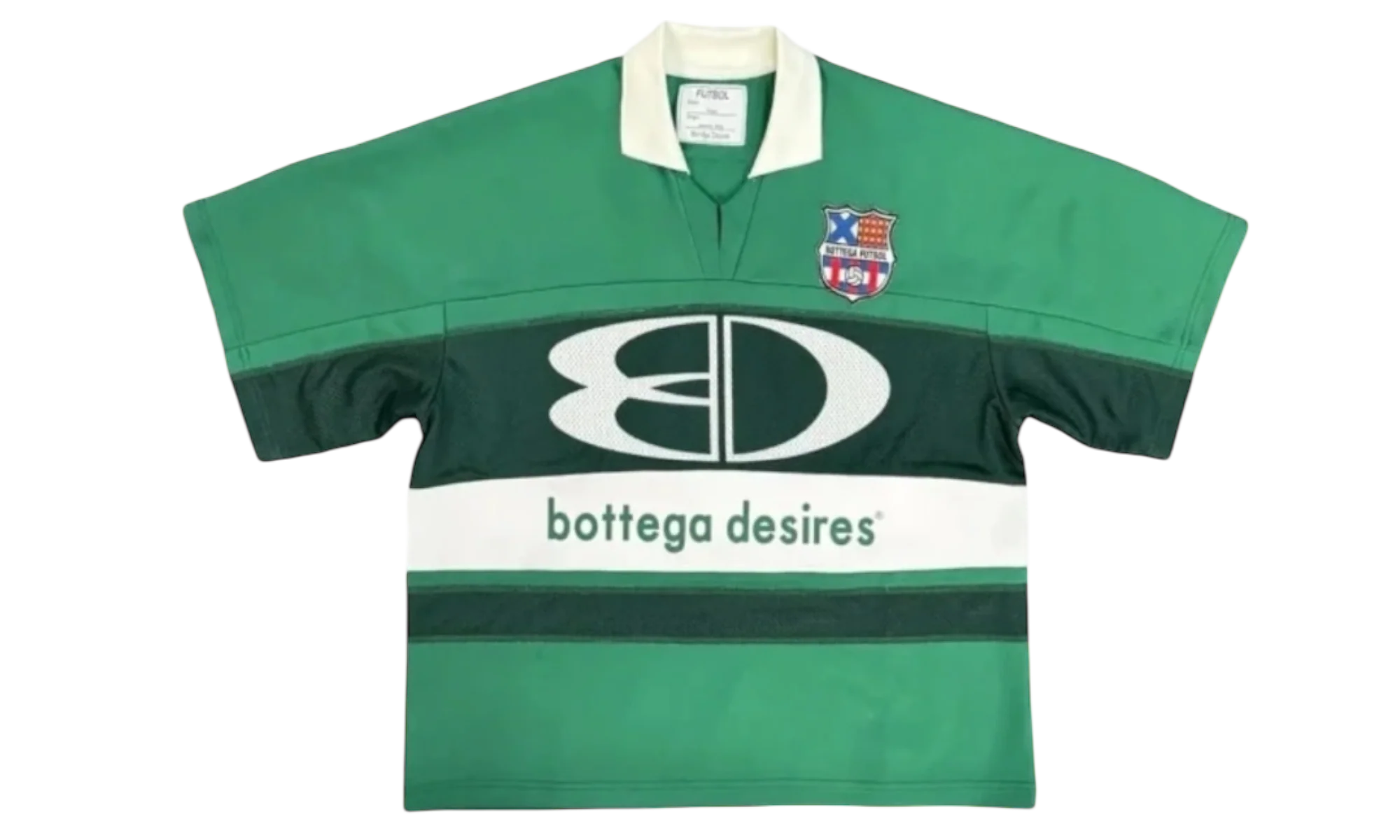
In today’s fashion landscape, where the lines between high-end luxury and everyday streetwear are becoming increasingly blurred, certain brands have emerged as true innovators. Among them, Bottega Desires has carved out a name for itself as a fashion label that represents elegance, quality, and modern sensibilities. Known for its bold aesthetics and fresh approach to design, the brand has gained attention for seamlessly blending refined luxury with youthful street culture.
One of the standout pieces in their collections is the Bottega Desires shirt, a wardrobe staple that captures the spirit of the label. More than just clothing, these shirts embody an attitude, representing a confident and expressive lifestyle. In this article, we’ll explore the essence of Bottega Desires, what makes the shirts unique, and why the brand is gaining traction in the fashion scene worldwide.
The Rise of Bottega Desires
Bottega Desires emerged as a label that bridges the gap between high fashion and urban streetwear. Unlike traditional luxury houses that focus primarily on exclusivity, Bottega Desires embraces inclusivity by speaking directly to the modern generation—individuals who want their clothing to reflect their lifestyle, ambitions, and creativity.
The brand’s identity revolves around clean lines, bold prints, quality craftsmanship, and a modern aesthetic that resonates with both streetwear enthusiasts and lovers of contemporary luxury. In an era where personal expression is a form of status, Bottega Desires has built a reputation as more than a clothing brand—it’s a cultural statement.
The Bottega Desires Shirt: Style Meets Comfort
Among its many offerings, the Bottega Desires shirt has become a defining piece. Shirts are often overlooked in streetwear, with hoodies and tees stealing the spotlight. However, Bottega Desires has reinvented the shirt, elevating it into a stylish, versatile item that can move seamlessly between casual and semi-formal settings.
Key Features of the Bottega Desires Shirt:
- Premium Fabric Selection
Crafted from high-quality cotton blends or breathable materials, these shirts balance durability with comfort. The feel of the fabric ensures long-lasting wear while keeping the wearer comfortable throughout the day. - Tailored Yet Relaxed Fit
The shirts strike the perfect balance between structure and freedom. They’re cut to flatter without restricting movement, making them adaptable for layering or standalone wear. - Minimalist Meets Bold Aesthetic
Depending on the collection, the Bottega Desires shirt may feature minimalist details—like crisp collars and subtle branding—or bolder elements such as graphic prints and statement patterns. This versatility makes them appealing to a wide spectrum of fashion lovers. - Attention to Detail
Every button, stitch, and design feature reflects the brand’s commitment to craftsmanship. Even in a world dominated by fast fashion, Bottega Desires ensures that quality remains at the heart of their shirts.
Why the Bottega Desires Shirt Stands Out
Fashion lovers know that not all shirts are created equal. What separates the Bottega Desires shirt from others on the market is its ability to blend different fashion worlds. It’s refined enough for elevated settings but relaxed enough for everyday streetwear.
- For the Streetwear Enthusiast: The shirt can be styled with joggers, sneakers, or oversized jackets to create a street-smart look.
- For the Minimalist: A crisp white or neutral-toned shirt pairs effortlessly with tailored trousers or denim for understated elegance.
- For the Statement Maker: Graphic or bold-patterned Bottega Desires shirts allow individuals to showcase personality without compromising on quality.
This versatility is key in a world where fashion is as much about individuality as it is about trends.
Bottega Desires and the Streetwear Movement
The success of the Bottega Desires shirt is not just about design—it’s about how it fits into the wider movement of fashion today. Streetwear has become a global phenomenon, transcending its origins in skate, hip-hop, and urban culture to become an influence on high fashion.
Bottega Desires taps into this by understanding what modern consumers want: clothing that looks good, feels good, and tells a story. The shirts are not simply garments but symbols of confidence, independence, and ambition. This alignment with contemporary values makes the brand resonate deeply with the younger generation.
Styling the Bottega Desires Shirt
For those new to the brand, here are some ways to style the Bottega Desires shirt:
- Casual Streetwear Look
Pair an oversized Bottega Desires shirt with distressed jeans and sneakers. Add accessories like a bucket hat or a statement chain to complete the urban vibe. - Smart-Casual Aesthetic
Opt for a fitted shirt with neutral tones, tucked into tailored trousers. Finish with loafers or minimalist sneakers for a refined yet laid-back look. - Layered Ensemble
Layer an open Bottega Desires shirt over a plain tee, styled with shorts or joggers. This creates a versatile outfit ideal for transitional weather. - Bold Expression
Choose a shirt with vibrant prints or striking logos to make a statement. Pair with monochrome bottoms to balance the look.
The Future of Bottega Desires
Bottega Desires is more than just a passing trend. With its growing presence, the brand is positioning itself as a leader in the fusion of luxury and streetwear. As fashion continues to evolve, the label is likely to expand its collections, offering more bold, innovative designs while staying true to its roots in quality and craftsmanship.
The Bottega Desires shirt is a symbol of this vision—demonstrating how a classic piece of clothing can be redefined for a modern generation. By focusing on design, comfort, and cultural relevance, Bottega Desires is setting itself apart as a brand to watch.
Final Thoughts
Fashion is no longer just about clothing—it’s about identity, creativity, and lifestyle. Bottega Desires has tapped into this reality by offering pieces that balance luxury with accessibility, and the Bottega Desires shirt perfectly embodies this ethos. With its versatility, premium design, and cultural relevance, it has become a must-have item for anyone looking to elevate their wardrobe.
Whether you’re a streetwear devotee or someone seeking timeless, modern pieces, Bottega Desires delivers. The shirt isn’t just fashion—it’s a movement, a statement, and a promise of what the future of style can be.
Fashion
GoldenGateMax.shop: Latest Trends in Fashion, Footwear & More
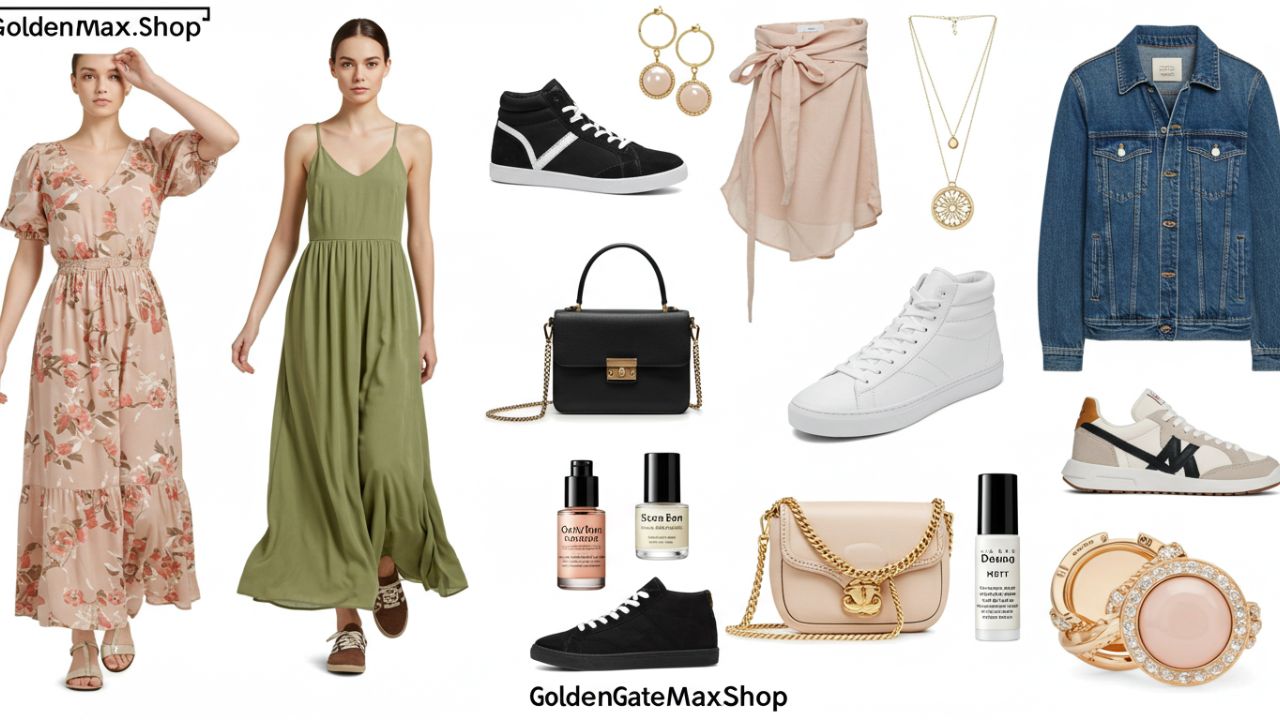
Introduction to GoldenGateMax.shop
Welcome to GoldenGateMax.shop, your ultimate destination for the latest trends in fashion and footwear! As we step into a new season filled with style possibilities, it’s time to refresh your wardrobe and elevate your look. Whether you’re searching for chic outfits, trendy shoes, or standout accessories, we’ve got you covered. Join us as we explore what’s hot in 2022 and how you can express yourself through fashion that speaks volumes. Ready to dive into the world of style? Let’s get started!
Trends in fashion for 2022
Fashion in 2022 has embraced individuality like never before. Bold colors and unique patterns have taken center stage, encouraging self-expression through clothing choices. Oversized silhouettes are making a strong comeback. Whether it’s baggy jeans or oversized blazers, comfort meets style this year. Layering remains key, adding depth to outfits with various textures and lengths. Retro vibes are influencing current trends too. Think 90s-inspired pieces mixed with modern cuts for a fresh take on nostalgia. Accessories from that era are also back think bucket hats and chunky sneakers.
Sustainability is another crucial focus in fashion this year. Many brands prioritize eco-friendly materials and ethical production methods, allowing consumers to shop consciously while staying chic. As the year progresses, expect more innovative designs that challenge conventional norms and celebrate diversity in style. Fashion has become an exciting playground of creativity where everyone can find their fit.
Latest footwear styles and brands
Footwear is evolving, reflecting both comfort and style. Chunky sneakers continue to dominate the scene, blending athletic flair with street-smart aesthetics. Brands like Nike and Adidas are pushing boundaries with innovative designs that cater to fashion-forward individuals while maintaining practicality. Colorful hues and unique patterns add a playful twist to any outfit. On the other hand, classic loafers are making a comeback for those seeking sophistication without sacrificing comfort. They pair well with tailored trousers or even casual denim.
Don’t overlook boots this season! Combat styles are perfect for adding an edge to your wardrobe, while knee-high options offer versatility across various ensembles. Sustainable brands like Allbirds and Veja are also gaining traction, proving you don’t have to choose between style and ethics in footwear choices today. Whether you’re dressing up or down, there’s something out there waiting for you at goldengatemax.shop/.
Must-have accessories for the season
Accessories can transform any outfit, making them essential for your wardrobe. This season, think bold and playful. Chunky jewelry is a must. Oversized earrings or layered necklaces add flair to simple looks. They catch the light beautifully and draw attention. Bags are also key this season. Crossbody styles in bright colors complement various outfits while keeping your essentials close by. Look for unique textures like woven fabrics or shiny metallics.
Don’t forget about hats! Wide-brimmed styles not only provide sun protection but instantly elevate your style quotient. Scarves remain versatile staples. Worn as headbands or tied around bags, they introduce patterns and color without overwhelming your look. Explore these accessories at goldengatemax.shop/ to stay ahead of the trend curve this season!
Sustainable and ethical fashion options
Sustainable and ethical fashion options are gaining momentum in today’s style landscape. Shoppers increasingly seek brands that prioritize environmental responsibility and fair labor practices. Designers are now using organic materials, like cotton and hemp, reducing their carbon footprint. This shift not only benefits the planet but also creates unique textures that stand out. Moreover, many labels emphasize transparency, sharing information about sourcing and production processes. Consumers appreciate knowing where their clothes come from.
Upcycling is another trend to watch. Fashion pieces made from recycled materials offer creativity while minimizing waste. Brands committed to sustainability often feature timeless designs that transcend seasonal trends, encouraging a more thoughtful approach to wardrobe choices. By investing in such items, you contribute to a positive change within the industry while expressing your personal style uniquely.
Special features and discounts at GoldenGateMax.shop
GoldenGateMax.shop offers an array of special features that enhance the shopping experience. One highlight is their user-friendly interface, designed for easy navigation. Shoppers can quickly find the latest trends and styles with just a few clicks. The site also boasts exclusive discounts on popular items throughout the season. Regular promotions mean you can snag fabulous deals without breaking the bank. Sign up for their newsletter to stay updated on flash sales and limited-time offers.
Another noteworthy aspect is their loyalty program. Frequent shoppers earn points with each purchase, which can be redeemed for future discounts or free shipping options. Additionally, goldengatemax.shop/ frequently collaborates with emerging designers to showcase unique pieces at competitive prices, ensuring customers have access to standout fashion choices not found elsewhere. Enjoy seamless shopping and fantastic savings all in one place!
Conclusion: Elevate Your Style with GoldenGateMax.shop!
Elevate your style with GoldenGateMax.shop! This online destination offers a perfect blend of the latest trends in fashion, footwear, and accessories. Whether you’re looking to refresh your wardrobe or make a bold statement, you’ll find everything you need in one place. Stay ahead of the curve with popular styles for 2022 that showcase individuality and flair. The latest footwear options cater to every taste and occasion while ensuring comfort remains a priority. Don’t forget to explore must-have accessories that can effortlessly transform any outfit into something special.
As consumer awareness grows, sustainable fashion choices have become more essential than ever. goldengatemax.shop/ proudly supports eco-friendly brands committed to ethical practices without compromising on style. Take advantage of special features and discounts available at GoldenGateMax.shop as well. These perks enhance your shopping experience, making it both enjoyable and budget-friendly. With such an extensive range of offerings, it’s clear why goldengatemax.shop/ is quickly becoming a favorite among fashion enthusiasts everywhere. Embrace this opportunity to elevate your personal style today!
Fashion
Best Fabric Option For Long-Lasting Bedding Comfort

The material and weave of a sheet define its characteristics and functionality. For instance, some kinds of sheets tend to possess characteristics that are heavy as well as insulating, while others tend to be cool and breathable. The ideal bed sheet material ultimately relies on the requirements and tastes of each sleeper. There is no one ideal material for all sheets, even though materials like Egyptian fabric cotton, as well as 100% mulberry silk fabric, are known to provide high-quality sheets. Rather, the finest material is the one that best suits your requirements and tastes. Find affordable cheap duvet covers UK that offer quality, comfort, and style at reasonable costs.
Cotton Comforters For Beds
Cotton’s easy fibers and super absorbency make it a suitable fabric for bed comforters. Comforters made from cotton are exceedingly resilient and long-lasting. Cotton comforters are especially right for the summer. Some of their number one benefits encompass:
- Breathability: Cotton fabric comforters promote airflow, which facilitates managing body temperature, particularly in warmer climates.
- Moisture Absorption: They efficaciously absorb perspiration, retaining the frame dry all night long and fending off disruptions delivered on via heavy perspiration.
- Durability: Their quality gets higher with every wash, and they are able to tolerate repeated washings and heavy use without losing their excellent quality.
- Versatility: Cotton comforters are suitable for all seasons in that they offer warmth in the cold and cooling in the summer.
Linen
Comfortable and lightweight
Linen is renowned for its extraordinary experience and superior quality. Our pre-washing process ensures that the 100% French flax linen is soft right out of the field. Eve linen provides you with daily luxury since it is incredibly breathable, simple to maintain, and gets softer with each wash.
Designed to last
Given that linen fibers are inherently 30% thicker and tougher than cotton, this is a wise long-term purchase. We source our linen carefully, turning down goods that others could auction off on because they don’t live up to our durability or finish criteria.
Comforters Made Of Silk For Beds
Because it feels cool against the skin and has a sensitive texture, silk makes up several of the fine materials for bed bedding, particularly in the summertime. In addition to imparting unequalled luxuriousness and rest even as you sleep, it aids in retaining the moisture for your skin and hair. Among the noteworthy characteristics of silk comforters are:
- Temperature Regulation: They provide a warm temperature in a cold climate and cool the body in a hot climate.
- Allergy-Friendly: Silk is perfect for hypersensitive reaction patients because it naturally resists dirt.
- Benefits for the Skin: It lessens the visibility of facial wrinkles.
- Cleaning Ease: Silk comforters are simple to clean and resistant to stains.
- Style and Durability: They deliver the bedroom a touch of refinement and are long-lasting.
Bamboo
Additionally, it doesn’t cause allergic reactions and is clearly immune to microorganisms, making it perfect for those with delicate complexions or allergic reactions. Your bed can be pretty snug to sleep in with those sheets’ clean and soft texture. Bamboo mattresses are a great option for anyone looking for comfortable bedding that also cares for the environment because of their eco-friendliness and comfort element.
Microfiber: Cost-Effective Cosiness
Microfiber linens are the preferred option for people who are watching their expenditure. In addition to being long-lasting and rarely wrinkled, they are particularly gentle on allergy sufferers because dust mites can’t aggravate them. These sheets are very easy to maintain; simply throw them in the washing machine and dryer. Microfiber sheets are a fantastic choice for anyone looking for high-quality bedding without breaking the bank because of their unique blend of affordability and comfort.
Polyester
The majority of clothes and sheets are composed of polyester, a synthetic fabric material derived from plastic fibers. Polyester sheets are reasonably wrinkle-resistant, machine-washable, and reasonably priced. Polyester sheets don’t breathe well, so they might not be the best option for people who want to sleep cool. Some sleepers may find polyester uncomfortable since it can retain moisture. For a smoother feel and better temperature control than polyester alone, polyester is frequently combined with cotton, just like in apparel.
The Significance Of Thread Count
The variety of threads in a square inch of cloth is called the thread count. A higher percentage of threads commonly shows a tighter weave and finer thread, which results in a softer and more resilient sheet.
Because air can’t drift via densely woven fabric as conveniently, a thread that remembers this is extra may additionally result in much less breathability. Furthermore, some extraordinarily high thread counts result from using double- or triple-ply threads, which do not accurately represent the caliber of a pair of sheets.
Final Words
In conclusion, deciding on bedding that fits you is essential to getting a terrific night’s sleep and ultimate comfort fabric. Every material kind, whether or not it is top-rate silk or conventional cotton, has advantages that may fit you.
Visit woolrec for more informative blogs.
Fashion
South Asian Wedding: How to Plan a Perfect Ceremony
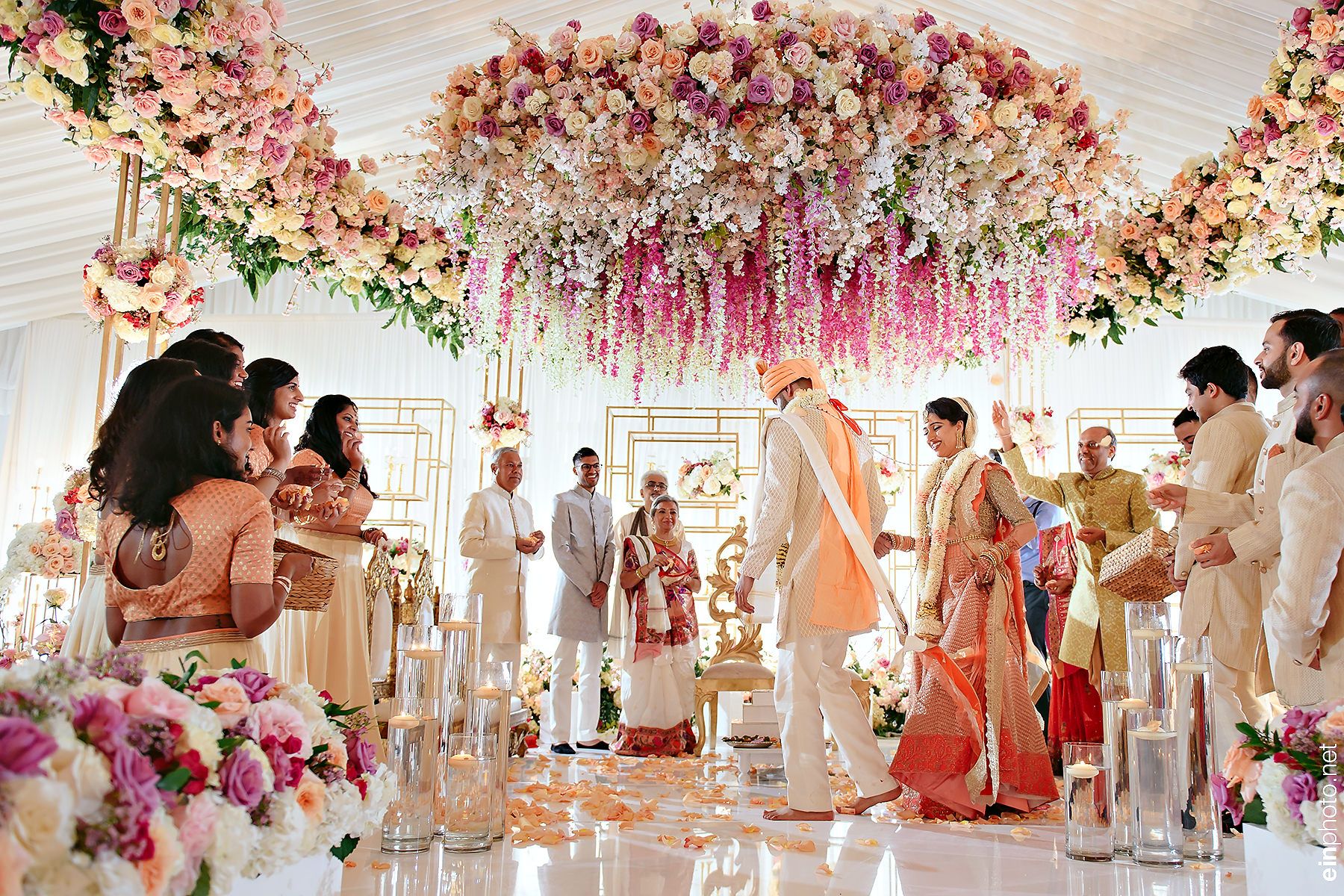
South Asian wedding are a deep emotional tapestry of cultural legacy, vibrant celebration, and great emotional importance. From the Mehndi and Sangeet to the wedding day to the reception. It involves combining modern touches with ancient traditions, managing many people, and planning events usually spanning several days. For the groom and his entourage, one crucial component of such preparation is obtaining clothing that depicts both tradition and style. Reaching the last group, as given by mens asian wedding clothes Uk experts is an important first step toward ensuring the entire wedding party looks impeccably unified and culturally appropriate.
Establish Realistic Priorities and a Budget
Having a realistic and honest budget is the first foundation of any good wedding strategy. South Asian wedding often made up of many Events can be expensive; begin by setting your whole budget and allocating money to different items like venue, food, clothing, and photography. Discover. Allocate a larger part of your budget for your absolute necessities, perhaps a particular place or award-winning photographer, and set reserve. Think about extra costs such as catering for vendors, transportation, and overtime expenses. Keeping tabs on expenditures and avoiding overspending will become a comfort while making the planning much easier.
Book Important Vendors Early
Since South Asian wedding are numerous and sought-after, premium companies reserve a year in advance, sometimes even two years ahead of time. Book your locations for your main events first, and find a reliable caterer with experience with genuine cuisine as your highest priority objectives. Second, line photographers and videographers conversant with the cultural significance of each rite, a skilled Mehndi artist, and entertainment for the Sangeet, among other necessary vendors.BBookingusually gets you your top selections of vendors and the lowest rates, therefore avoiding last-minute compromises that would sabotage your vision for the day.
Craft a Unifying Guest Experience
The South Asian wedding is a journey for your guests. Carefully craft their experience as soon as they get the invitation. Create a neat and orderly wedding website or an extremely detailed information card with the timings, dress code, and cultural meaning of each event. Provide convenience to the guests by arranging for transport between locations if required. During the festivities, arrange for comfortable and convenient movement of food and drinks, and even include a welcome package in their hotel with snacks and a schedule. An educated and comfortable guest will be more active and will be happy to indulge your festivities to the fullest.
Designate and Appoint a Point of Contact
It will not be possible for the couple to deal with every issue on the event days. Assign duties to your reliable relatives and friends or a professional wedding planner. Assign a point of contact to each vendor where they have someone they can talk to with questions regarding setup or timing, rather than interrupting you. What this means is you, bride and groom, can relax now, have fun, and be the guest of honour at your own wedding. Delegation is not abandonment but an approach to provide impeccable execution and personal enjoyment.
Establish Personal Traditions and Ceremonies
Although custom provides a beautiful frame, personal touches make your wedding uniquely yours. This can entail composing your own vows to be read during the Varmala ceremony, including a unity ceremony like a candle lighting together, or having a unique song as your marriage music. In the reception, you can also include photos of your relationship road or a beloved family recipe. Respecting customs and including your own tale is a very rewarding and unforgettable adventure for you and your visitors.
Draft a comprehensive wedding day schedule.
The actual wedding day is a difficult schedule of events requiring minute timing. With your planner, caterer, and photographer, create a minute-by-minute timetable. Offer cushion time in longer-than-expected ceremonies like the Varmala or the photo shoot. Share this timeline with all essential stakeholders: vendors, the wedding party,and immediate family members. Handling this schedule by a reliable family member or day-of coordinator lets everything go as planned, so you may be present and concentrated. In every moment without regard for organisation.
Conclusion
Planning the ideal South Asian wedding is a labour of love that mixes deep respect for ethnic culture with personal creativity. It includes strategic planning from early budget setting and vendor reservation toa mooth guest experience spanning. From clothes to cuisine to calendaring, detail is crucial. Still, it’s all about making a party for everyone involved that is very personal and celebratory as well as artistic and multicultural. Couples can transform their unique day into a stylish, stress-free, and unforgettable beginning to their marriage by task distribution and the focus on keeping customs personal . This is how we can plan a perfect south asian wedding.
Visit woolrec for more informative blogs.
Fashion
Guide to Picking Durable Uniforms for Dental Clinics

Dental clinics thrive on professionalism, and uniforms are an essential part of that impression. Strong fabric, considerate colours, and snug suits all play their role. A well-selected uniform isn’t simply attire; it turns into an accomplice through lengthy hours. Let’s discover the necessities of choosing long-lasting durable uniforms for dental experts.
Fabric That Lasts
Everyday hospital life is difficult on clothing, so fabric ought to stand up to steady washing, unintentional spills, and infinite movement. Those who put on dental scrubs Uk realise the significance of resilient blends that don’t fade fast or fall apart. Cotton-rich substances with polyester energy provide breathability at the same time as status as much as day-by-day put-on. Stain resistance is likewise a sport changer, assisting groups of workers to live presentably in the course of disturbing shifts. A uniform that holds form after endless cycles doesn’t simply appear neat; it boosts self-belief too. Tough cloth picks hold a group of workers targeted on sufferers instead of cloth dresser mishaps. Strength truly begins with the weave.
Colour & Brand Image
Colours aren’t selected lightly, mainly in dental clinics in which the affected person’s consolation matters. White nevertheless displays purity and hygiene, at the same time as calm blues and greens soothe hectic minds. Beyond mood, colour additionally shapes logo identity. A group wearing coordinated colours appears professional, united, and trustworthy. Patients frequently observe the little details, and durable uniforms colour subtly reinforces reputation. Selecting sunglasses that replicate the hospital’s values creates concord between look and message. Colours aren’t simply decoration; they come to be silent ambassadors of professionalism and affected person reassurance.
Comfort for Long Shifts
Uniforms ought to permit a group of workers to transport without discomfort, or the day feels two times as lengthy. Breathable fabric that permits airflow saves you from overheating and irritation. A little stretch withinside the weave helps flexibility, making common motions much less tiring. Soft textures at the pores and skin additionally matter, assisting in lessening friction in the course of lengthy procedures. When durable uniforms provide consolation, experts certainly direct their power toward sufferers as opposed to adjusting collars or rolling sleeves. The proper experience doesn’t simply lessen fatigue; it brings peace of mind during stressful shifts.
Size & Fit Essentials
Fit can outline whether or not the workforce feels assured or self-conscious. A uniform that’s too tight restricts herbal movement, while a loose one can appear untidy. The stability lies in apparel that moves with the frame but continues an expert form. Features like adjustable waistbands and aspect vents upload flexibility to conventional sizing. Clinics need to offer inclusive stages so no group member is left with a bad suit. When durable uniforms fit correctly, self-assurance grows, posture improves, and the group initiates a cultured image. A practical suit is more than it looks; it’s approximately freedom, professionalism, and appreciation for every person type.
Style vs Practicality
While elegant durable uniforms appear appealing, practicality constantly merits precedence in dental settings. Pockets aren’t simply decorative; they’re critical for tools, pens, and gloves. Sleeves and necklines need to permit ease without catching on contraptions or equipment. It’s clean to get overexcited by using cutting-edge cuts; however, dental specialists want clothes that could preserve tempo with disturbing routines. Style must never compromise movement, safety, or focus. The first-class uniforms supply a clean, expert look even as they nevertheless assist normal painting requirements.
Easy-Care Fabrics
Dental Clinics workforces don’t have hours to spend on laundry, so clean-care fabrics are a blessing. Stain-resistant blends keep effort, retaining durable uniforms looking sharp after spills. Quick-drying substances suggest sparkling units are geared up by using day after day without delay. Wrinkle-resistant weaves spare the trouble of ironing earlier than early shifts. Uniforms that maintain shade and form after common washing preserve professionalism with minimum effort. Choosing low-maintenance fabrics keeps staff looking crisp and assured even as it releases treasured time for what virtually matters: notable affected person care.
Visual Cohesion Teamwear
A unified appearance throughout a dental group sends a clean message of professionalism and trust. When the workforce puts on coordinated uniforms, sufferers immediately sense reassurance with the aid of the feeling of order and harmony. Consistency doesn’t suggest everybody has to get dressed identically, as small versions in fashion for specific roles can nevertheless align below one palette. Shared colourings and topics spotlight teamwork, developing a robust emblem presence. Wearing matching apparel builds belonging, pride, and self-assurance in the workforce. Visual concord displays more than looks; it strengthens morale and establishes a collective identity.
Conclusion
Uniforms in dental clinics aren’t simply clothes; they’re an announcement of care, strength, and identity. Durable fabric, realistic fits, and considerate colourings all integrate to create apparel that helps the workforce and reassures sufferers. When selected wisely, durable uniforms don’t genuinely get dressed by a group; they encourage self-assurance and professionalism each unmarried day.
Visit woolrec for more informative blogs.
-

 Fashion4 weeks ago
Fashion4 weeks agoComme des Garcons: The Iconic Avant-Garde Fashion Brand
-

 Entertainment1 month ago
Entertainment1 month agoOGFap Review: Pros, Cons, and User Experience
-

 Blog1 month ago
Blog1 month agoRuisseau d’Avenelle: A Peaceful Escape into Nature
-

 Law2 weeks ago
Law2 weeks agoMotorcycle Accident Lawyer Lexington SC — Protecting Riders’ Rights With Solomon Law SC
-

 Life Style4 weeks ago
Life Style4 weeks agoThe Ultimate Guide to Halloween Contacts for Eyes: Everything You Need to Transform into Your Darkest Character
-

 Fashion2 weeks ago
Fashion2 weeks agoCustom Jersey Printing: Designing Your Team’s Identity with SeamJersey
-

 Blog2 months ago
Blog2 months agoi̇ns: Exploring Its Meaning, Values, and Modern Impact
-

 Blog2 months ago
Blog2 months agoEcryptobit.com Bitcoin: Everything You Need to Know

